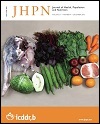Comparison of Seafood Consumption in a Group of Italian Mother-Child Pairs
DOI:
https://doi.org/10.3329/jhpn.v31i4.20000Keywords:
Child, Food habits, Mothers, Pregnancy, Seafood, ItalyAbstract
Seafood is an important component of healthful human diets. Intake of seafood is recommended both for young women and children. In fact, it is a good source of high-quality protein, low in saturated fats, and rich in essential nutrients (e.g. iodine, iron, choline, and selenium) and long-chain polyunsaturated fatty acids (LCPUFAs), especially omega-3. However, the relationship between maternal diet and the childrens dietary habits is controversial. This study investigated the possible association between the seafood consumption by mothers and that by their 8-11 years old children and compared maternal seafood intakes during pregnancy and about 10 years later. The seafood consumption by 37 pregnant women was assessed in 1999-2001. In 2009, mothers were asked to report their weekly intake and their childrens. Motherchild pairs showed a similar consumption pattern: the overall intake was 1.28±0.77 vs 1.19±0.64 (p=0.49) while the sum of specific items was 3.71±3.01 vs 3.18±2.90 (p=0.049). However, it cannot be discerned whether maternal diet affected the childrens nutritional habits or vice-versa. In fact, mothers showed to have a higher seafood intake about 10 years after pregnancy (3.71 vs 1.83; p<0.001), suggesting that a progressive modification of dietary habits occurred after delivery, possibly due to the influence of maternal diet on the nutritional habits of offspring or due to the presence of children in the family unit, that could have influenced maternal dietary habits. This dietary improvement could be brought forward through educational interventions addressed to young women, that could also allow a more informed choice of the healthier species of fish both for them and their children.
DOI: http://dx.doi.org/10.3329/jhpn.v31i4.20000
J HEALTH POPUL NUTR 2013 Dec; 31(4): 455-461
Downloads
439
329

